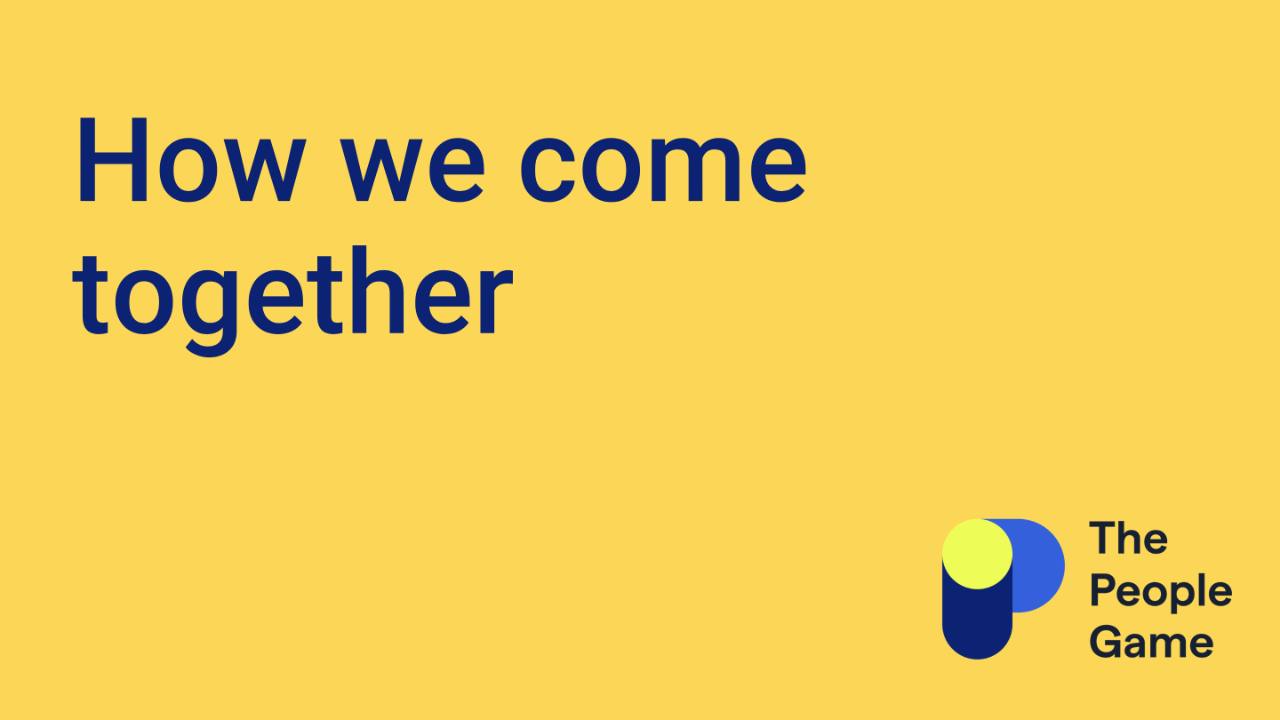Partnering for Performance: The Power of Alignment in Teams

In the world of high-performing teams, partnering and alignment are not just buzzwords—they are essential elements that drive success. When teams are aligned and work in partnership, they can achieve remarkable outcomes that exceed individual capabilities.
At The People Game, we understand that fostering these elements requires intentionality and effort.
In this edition of our newsletter, we explore the critical role of partnering and alignment in teams and provide actionable shifts to enhance these dynamics within your organisation.
The Importance of Partnering and Alignment
Alignment and effective partnerships within teams are crucial for achieving common goals and ensuring smooth operations. When team members are aligned, they share a unified vision and purpose, leading to increased efficiency, innovation, and job satisfaction. Strong partnerships foster trust, collaboration, and mutual support, creating a resilient and dynamic work environment.
1. Define a Clear Vision and Shared Goals
A unified vision and shared goals are the cornerstones of alignment. When everyone understands and is committed to the same objectives, it creates a sense of purpose and direction.
Shift: Regularly communicate the team’s vision and goals. Ensure that every team member understands how their work contributes to the broader mission. Use visual aids and regular updates to keep the vision front and centre.
2. Establish Clear Roles and Responsibilities
Ambiguity in roles can lead to confusion and misalignment. Clear roles and responsibilities ensure that everyone knows what is expected of them and how they can contribute effectively.
Shift: Clearly define and document roles and responsibilities. Use tools like RACI (Responsible, Accountable, Consulted, Informed) charts to delineate tasks and accountabilities. Regularly review and update these roles as needed.
3. Foster Open Communication
Effective communication is the backbone of successful partnerships. Open channels of communication help to prevent misunderstandings and ensure that everyone is on the same page.
Shift: Encourage regular check-ins and open forums for discussion. Use collaborative tools like Slack or Microsoft Teams to facilitate ongoing communication. Foster a culture where feedback is welcomed and valued.
4. Encourage Collaborative Problem-Solving
When teams work together to solve problems, it builds a sense of partnership and collective responsibility. Collaborative problem-solving leverages diverse perspectives and enhances creativity.
Shift: Create opportunities for team members to collaborate on challenges. Use brainstorming sessions and workshops to tackle issues collectively. Celebrate collaborative successes to reinforce the value of teamwork.
5. Align Incentives and Rewards
Incentives and rewards that are aligned with team goals reinforce desired behaviours and outcomes. When individual and team incentives are in harmony, it fosters a unified effort towards common objectives.
Shift: Design incentive programs that reward both individual contributions and team achievements. Ensure that the criteria for rewards are transparent and aligned with the team’s goals. Recognise and celebrate team milestones.
6. Build Strong Interpersonal Relationships
Strong interpersonal relationships are the foundation of effective partnerships. When team members know and trust each other, collaboration becomes more natural and effective.
Shift: Invest time in team-building activities and social events. Encourage informal interactions and create opportunities for team members to get to know each other personally. Foster an inclusive environment where everyone feels valued.
7. Promote Mutual Respect and Trust
Respect and trust are essential for healthy partnerships. When team members respect each other’s expertise and trust in their intentions, it creates a positive and productive work environment.
Shift: Model respectful behaviour and address any instances of disrespect promptly. Encourage team members to express appreciation for each other’s contributions. Build trust by being transparent and consistent in your actions.
8. Ensure Alignment with Organisational Values
Teams that are aligned with the organisation’s values are more cohesive and driven. Alignment with core values ensures that everyone is working towards the same ethical and cultural standards.
Shift: Regularly discuss how the team’s work aligns with organisational values. Highlight examples of behaviour that reflect these values. Ensure that team decisions and actions are consistent with the organisation’s principles.
9. Provide Support and Resources
Supporting your team with the necessary resources and tools is crucial for fostering effective partnerships and alignment. When team members feel equipped to do their jobs well, they are more likely to collaborate effectively.
Shift: Ensure that your team has access to the resources they need. Provide ongoing training and development opportunities. Show your team that you are invested in their success by removing obstacles and providing support.
10. Lead with Empathy and Understanding
Empathetic leadership fosters a supportive and inclusive team environment. When leaders understand and address the needs of their team members, it builds strong partnerships and alignment.
Shift: Practice active listening and show genuine concern for your team members’ well-being. Be flexible and accommodating when team members face challenges. Lead by example by demonstrating empathy and understanding in your interactions.
The Bottom Line
Partnering and alignment are vital for creating high-performing teams that can achieve extraordinary results. By implementing these shifts, you can strengthen partnerships and ensure that your team is aligned with its goals and values. At The People Game, we’re dedicated to fostering cultures that thrive on collaboration and alignment
Further Reading
Team of Teams by General Stanley McChrystal. A compelling exploration of how teams can adapt to complex environments through shared consciousness and empowered execution.
The Culture Code by Daniel Coyle. Insights into the secrets of highly successful groups and how to build a cohesive, high-performing team.
Radical Candor by Kim Scott. A guide to building strong relationships at work by caring personally and challenging directly.
We hope you found these insights valuable. As always, we’d love to hear your thoughts and experiences. Leave a comment or join the conversation on our social media channels on Facebook and Instagram.
The People Game







Responses